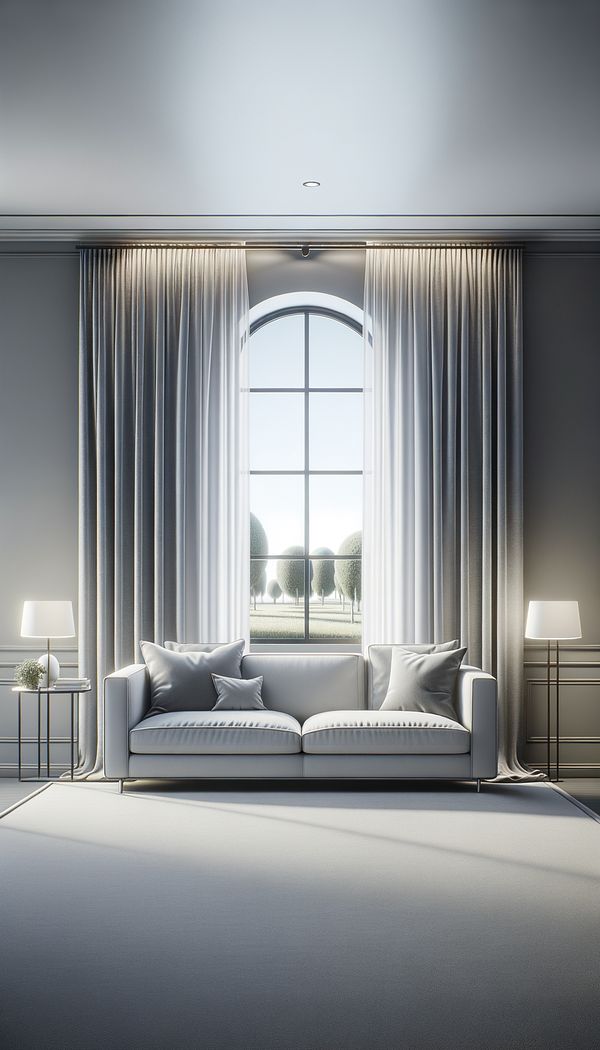What is a Heading?
Heading refers to the top section of a curtain or drapery that attaches to the track or rod.
Description
In the context of interior design, a heading is much more than just a practical component of a curtain or drapery; it's also a stylistic element that can influence the overall look and feel of a room. The heading is the top part of the curtain fabric that is stitched in a specific way to attach to the curtain track or rod. This area can be designed with various types of folds, gathers, or pleats, each contributing to the curtain’s final appearance and how it drapes or hangs.
Different heading styles serve different aesthetic and functional purposes. For example, a pencil pleat is a common heading style known for its tightly gathered folds, offering a traditional look. In contrast, a goblet pleat is more formal, with each pleat resembling the shape of a goblet, lending a luxurious feel to a room. Eyelet headings, where the fabric is looped through the rod, provide a more modern and casual look.
The choice of heading can significantly affect a room's ambiance. A well-chosen curtain heading not only complements the interior design style of the room but can also influence the amount of light that enters, the perceived height of the ceilings, and even the room's acoustics.
Usage
When selecting curtains for a living room with a modern aesthetic, one might opt for eyelet headings to maintain the room's clean lines and casual feel. Conversely, for a traditional dining room, choosing curtains with goblet pleats can add a touch of elegance and formality. In a bedroom, using curtains with blackout linings attached to a pencil pleat heading can enhance privacy and light control.
FAQs
-
What are the most common types of curtain headings?
The most common types of curtain headings include pencil pleat, goblet pleat, pinch pleat, eyelet, and tab top.
-
Can the choice of curtain heading affect a room's lighting?
Yes, the choice of curtain heading can affect a room's lighting, as different headings may allow more or less light to enter when curtains are closed, and influence how light diffuses throughout the room.
-
Is it possible to change the heading of existing curtains?
It's possible to change the heading of existing curtains, though the process may involve significant alterations. It's often easier and more cost-effective to select new curtains with the desired heading style.
Practical Application
When choosing a curtain or drapery heading for a room, consider the interior design style, desired light control, and whether the space requires a formal or casual atmosphere. To enhance a room’s aesthetic, coordinate the curtain heading style with other decorative elements, such as furniture types, lighting [[fixtures and hardware]], or textile techniques.
-
Window Treatments65 articles
-
Fabrication & Craftsmanship133 articles
-
Decorating Principles & Elements330 articles
-
Wall & Ceiling Treatments35 articles
-
Textiles & Upholstery252 articles
-
PerspectivePerspective is a technique that creates the illusion of depth and space in design.
-
LineLine in interior design refers to the continuous mark or edge that defines shapes and forms, and guides the eye movement within a space.
-
Egyptian CottonEgyptian Cotton is a luxurious type of cotton known for its long fibers.
-
Drop FrontA drop front refers to a hinged panel on a piece of furniture that can be lowered to provide a horizontal surface.
-
Campaign FurnitureCampaign furniture is portable, foldable furniture designed for travel and military campaigns.
